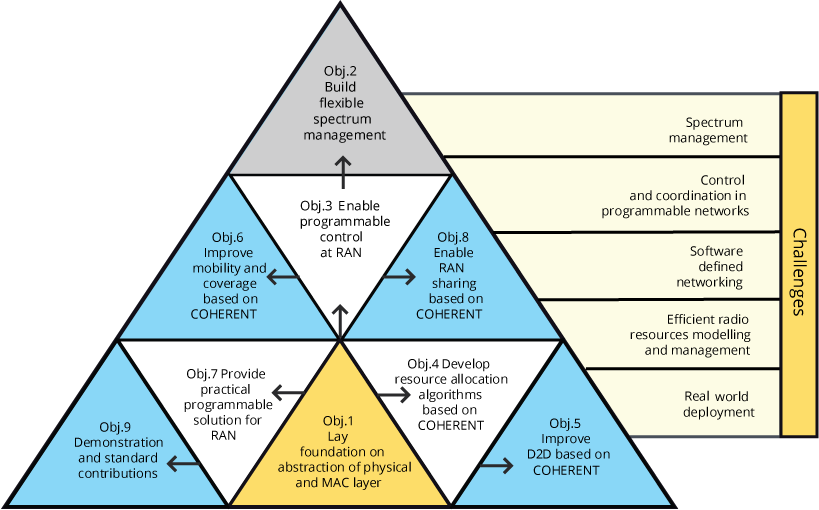The main objective of this project is to design, develop and showcase an open, unified and programmable control framework for 5G heterogeneous radio access networks.
The following objectives will be fulfilled by COHERENT:
The main objective of this project is to design, develop and showcase an open, unified and programmable control framework for 5G heterogeneous radio access networks.
The following objectives will be fulfilled by COHERENT:

COHERENT will apply the design principles of software defined networks (SDN) into radio access networks and leverage network abstractions as tools to enable scalable, flexible control and coordination of heterogonous mobile networks in order to support more cost-effective networks, new applications and services. Concretely COHERENT will achieve fundamental understanding on the abstraction of physical and MAC layers states, behaviours and functions, investigate and develop advanced resource coordination and interference managements strategies, and develop new techniques and protocols to enhance the control and coordination of heterogeneous mobile networks with openness, simplicity, scalability and flexibility.

COHERENT will investigate a variety of potential spectrum sharing strategies in the context of heterogeneous mobile networks, propose a flexible and efficient protocol and spectrum manager that will utilize the benefits of network virtualization and abstraction for efficient spectrum re-use in 5G networks, and analyse various proposal for network-aware spectrum sharing in the context of European and world-wide standardization activities.

Based on the developed control framework, COHERENT will develop advanced traffic steering and resource allocation techniques, novel joint radio and front-haul resource allocation schemes in heterogeneous mobile networks, and investigate radio access network (RAN) virtualization techniques allowing network slicing, and over-the-top applications and services delivery at the RAN level.

COHERENT will provide a demonstration of the proposed platform by validating different real-world use cases, leveraging the partners infrastructures and, where possible Future Internet Research and Experimentation Initiative (FIRE) facilities. Simulations and emulations will also be used when the available experimental facilities cannot meet the platform requirements in term of programmability. Emulation or simulation studies will be carried out using EURECOM’s OpenAirInterface platform.
